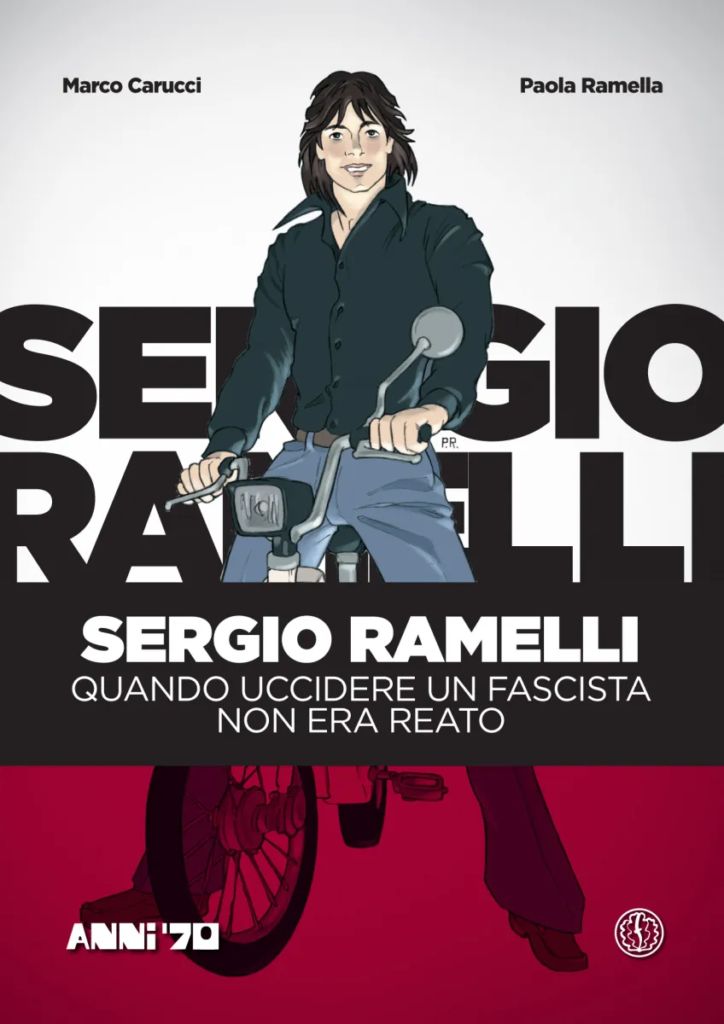“Hundreds of Roman greetings”. This is the scenario foreseen by Emanuele Fiano, a member of the Democratic Party, in sight of the anniversary of Sergio Ramelli’s deathwhich occurred on April 29, 1975. “There will be complaints – he added, referring to what happened after the commemorations in Milan in recent years -, there will be trials and next year it will be like this again”. “I hope that no procession is authorized at all – said the PD representative – and that they are reported again those who cynically use human pity to display an apology for fascism. Because for me it is always anti-fascism.”
But who is Sergio Ramelli and why is the memory of his death accompanied by Roman greetings?
Let’s start from March 13, 1975, when Ramelli, a 19-year-old high school student, was returning home to Via Amadeo in Milan. The lad, once he parked his scooter not far away, in via Paladini, he set off towards home: from there the beginning of the end. In fact, at number 15 of via Paladini, Ramelli was attacked from behind and hit with a wrench – the infamous one Hazet 36 reappeared some time ago in a shameful video by a far-left party… – by a group of extra-parliamentarians workers’ vanguard communists.
The boy was hit on the head ferociously and several times to the point of losing consciousness and ending up bloodless on the ground. A macabre dynamic that emerged from the testimony of one of her attackers, Marco Costa, during the trial: «Ramelli understands, he protects his head with his hands. His face is exposed and I can hit him in the face. But I’m afraid of scarring him, of breaking his teeth. I pull his hands down and hit him in the head with the wrench. He’s not stunned, he starts running. He finds the scooter between his feet and trips. I fall with him. I hit him again. I don’t know where: to the body, to the legs. I don’t know. A lady shouts: “Enough, leave him alone! So you kill him!”. I run away, and I had to be the last to escape.”
In turn Giuseppe Ferrari Well done gave the following testimony: «We waited ten minutes, and it seemed like an existence to me. I was looking at a shop window, but I didn’t say anything. I remember the boy who arrives and parks his scooter. Marco tells me: “Here he is”, or he just nudges me. I remember the screams. I remember, in front of me, an unbalanced man. I hit once, maybe twice. I remember a woman, on a balcony, shouting: “Enough!”. It all lasts a short time… I had the wrench in my hand and hid it under my coat. It was so short that I had the sensation of not having completed my task. I didn’t realize what had happened at all.”
A few minutes that began a long agony, lasting forty-seven days.
In fact, a few minutes after the attack, an ambulance took the young victim to the Maggiore Hospital, precisely to the former “Beretta” pavilion specializing in neurosurgery. Five hours, this was the duration of the surgery to which Ramelli was subjected in an attempt to reduce the damage caused by the blows inflicted on the skullcap. But this was only the beginning, as the post-operative period was made up of periods of coma alternating with others of lucidity.
A disastrous situation to the point of leading the health workers themselves to be doubtful about the young victim’s recovery of full physical functionality. But the worst never ends.
In fact, during the municipal council meeting that followed the attack, the then mayor Aldo Aniasi he had to face a session where the inhumanity went beyond all limits. Not for nothing, while on the one hand the right condemned what happened, among the audience present, however, there were those who applauded the news of the fact and booed the MSI representative Tomaso Staiti of Cuddia delle Chiuse who was speaking at the time.
A shame to which another was added: applause also from several left-wing city councilors. Applause that was consumed while a young life was wasting away in a hospital bed. The Ramelli family continued to have no peace even during Sergio’s long agony.
Indeed, on April 28th, a small group broke away from a left-wing march he went to the home of the young victim’s family, leaving writings on the walls and by posting a poster in which Luigi Ramelli, Sergio’s brother, was threatened with death if it had not disappeared within forty-eight hours. All this the day before the death of the young Missino: 29 April 1975, the 30th anniversary of the massacre of Piazzale Loreto.
The tension didn’t even subside at the funeral, which took place in the church of Saints Nereo and Achilleo. In fact, the local authorities had banned the funeral procession and left-wing extremists had threatened to use monkey wrenches against any participants. During the celebration four right-wing militants were reported for apologia of fascism due to Roman salutes addressed to the coffin. Furthermore, once the ceremony was over, around thirty young people, praising the figure of the Duce, tried to reach a nearby PCI headquarters, but the police managed to stop them. Following clashes with the police, three other militants were charged with seditious demonstration and apology for fascism.
On March 16, 1987, the trial began accused of the Ramelli massacre: Marco Costa, Giuseppe Ferrari Bravo, Claudio Colosio, Antonio Belpiede, Brunella Colombelli, Franco Castelli, Claudio Scazza and Luigi Montinari. The charges included voluntary homicide, attempted homicide, kidnapping, subversive association, damage. To support Ramelli’s family, a young MSI lawyer: Ignazio La Russa. On 16 May 1987 the II Court of Assizes of Milan acquitted Di Domenico due to insufficient evidence and declared Cavallari extraneous to the facts, but considered the other defendants guilty of manslaughter.
On 2 March 1989, the II section of the Court of Assizes of Appeal presided over by Renato Cavazzoni accepted the requests of the public prosecutor but, although the accusation was changed to voluntary homicide, recognized the mitigating factor of anomalous participation, thus significantly reducing the sentences: Costa went from 15 years to 11 and 4 months; Ferrari Bravo from 15 to 10 and 10 months; 7 years and 9 months in Colosio instead of 15; 7 years instead of 13 in Belpiede; 6 years and 3 months in Castelli, Colombelli, Montinari and Scazza instead of the initial 11-12.
On 23 January 1990 the first section of the Court of Cassation chaired by Corrado Carnevale rejected the request for recognition of premeditation and the defense appeals confirming the second degree sentences. In the scenario of a justice that leaves perplexing, it should also be remembered that some of the then medical students convicted, later, they made a career in the medical sector, holding prestigious hospital roles.
An epilogue that smacks of injustice but no one talks about it. And who tries to give voice to victims deliberately silenced, is silenced in turn. A tenacity which, paradoxically, has given rise to a publishing house with the intention of giving voice to victims and characters promptly thrown into limbo due to their political affiliation.
We’re talking about Ferrogallico, the publishing house of “stubborn and contrary” comics born precisely from a “No”, as told by its publisher Marco Carucci in 2019, on the occasion of the presentation of his editorial creation to the cultural association Il Ramo d’Oro: “It had been at least 3/4 years since I had decided, as an old Milanese militant, to tell the story of Sergio Ramelli in a slightly different way from how it had been told in books and stories. I myself wanted to find a way to continue to pass on Sergio’s story through a new tool, especially for young people.”

Hence the idea of using comics, which led the publisher to write the screenplay by Sergio Ramelli. Once the script was done, however, a designer was missing. An absence that pushed the authors to knock on various publishing houses, whose “Yes”, once the script was read, became “No”. And it is precisely from those “No” that Ferrogallico came to life, just as told by its own publisher: “that’s where Ferrogallico was born: from a No”. A “No” which, in May 2017, led to the publication of the first comic of the publishing house, dedicated precisely to that young MSI man who was barbarically murdered just because he “dared” to say “No”. “No” to the injustices and crimes suffered by MSI members.
A “No” which, in fact, Ramelli expressed it loud and clear in a school essay, in which he condemned the Red Brigades, adding a note of blame towards the political world for the lack of institutional condolences faced with the death of two MSI militants, Giuseppe Mazzola and Graziano Giralucci, killed during the assault on the MSI headquarters in Padua the previous year (17 June 1974). A theme that became the “head of the indictment” giving rise to a sort of school “political process”.instituted against Ramelli by students who accused him of being fascist.
A process that ended with the boy’s death sentence, but which, in the end, made it eternal.









